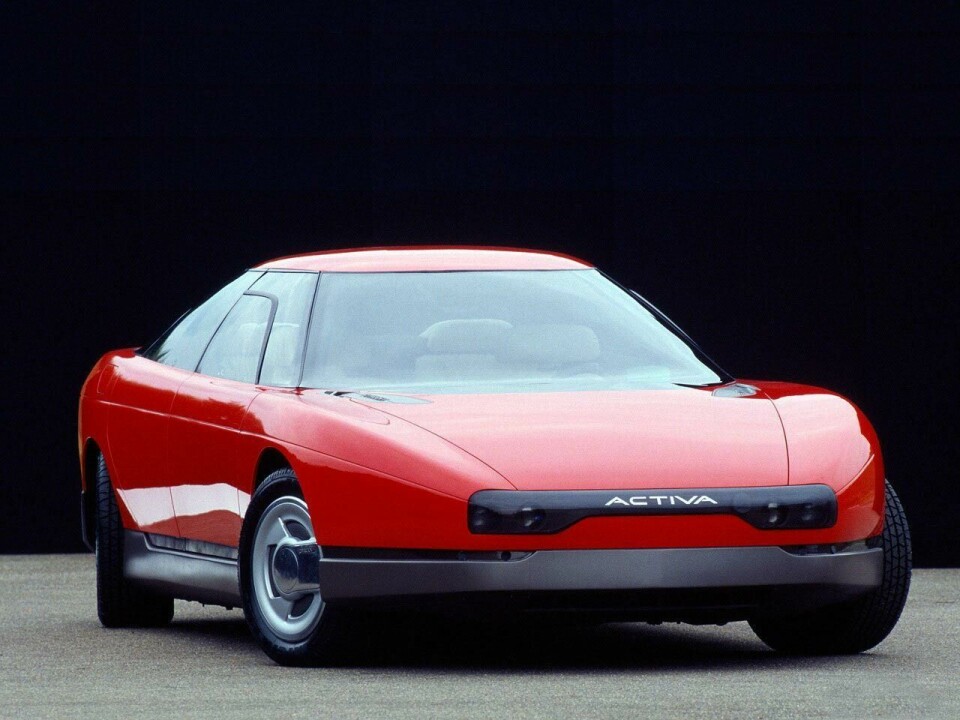
Concept Car of the Week: Citroën Activa I (1988)
A look back at the big Citroën built to show off some pretty high-tech hydropneumatics
There’s nothing quite like a carmaker’s home motor show to encourage a little extra flare from its showcars. At the 1988 Mondial de l’Automobile in Paris, Citroën showed its first Activa concept, designed as a rolling laboratory that showed how its complex hydraulic systems could be controlled by even more sophisticated electronics for the time.

Designed under the directorship of Art Blakeslee, the Activa I’s exterior was the work of Dan Abramson, Citroën’s head of large car design at the time. Measuring 4750mm long and 1900mm wide, the car featured quite extreme proportions, with a long front overhang, lengthy wheelbase and chopped-off rear. However, its aerodynamically-optimised soft radii and simple surfaces that tapered forwards gave the car’s body a clean and simple look that contrasted with the high-tech engineering underneath.

The only sharp angles of the exterior were those of the rear wing, which was electronically controlled. Remote-controlled scissor doors meant that the car had no B-pillar, although all of the pillars were blacked-out, and the car’s ample glazing was smoked, leaving a small patch of red on the roof that had the appearance of a little umbrella held over the cabin’s occupants.
The horizontal lamps both front and back and sci-fi-inspired wheel design hinted at some of the technology on offer, but this became more apparent inside. Despite its apparent simplicity, and tasteful grey and beige colourway, the Activa’s interior featured digital readouts for the oil pressure, water temperature and fuel, while speed and revs were shown in a holographic head-up display at the base of the windscreen.

The centre stack featured an LCD display that showed data about the car’s HVAC system, or from eight proximity sensors located around the car when parking. It also showed road maps, which were loaded from the floppy-disk drive and scrolled through using the mouse-like roller ball at the base of the centre console. The car also had extremely advanced communication features for 1988, including a radiotelephone and a teletex terminal.
But while the car’s design concentrated on simplification, its predominant purpose was as a technology showcase for the firm’s prowess with hydraulics, and the showcar was fully operational as a result. The car’s hydropneumatic suspension featured self-levelling and instantly variable damping, allowing an extremely soft, comfortable ride, an extremely firm, sporty ride, or anything in between. The car also had an active anti-roll control, which would make production in the Citroën Xantia Activa.

In addition, the car’s ride height was constantly variable when driving, for optimal aerodynamic efficiency, and would raise by 40mm automatically when you stopped to make access to the cabin easier.
While the suspension was impressive, the car’s steering system was its party piece. The Activa had four-wheel drive, four-wheel steering and, all-round independent wheel movement. At low speeds, the rear wheels would turn in the opposite direction to the fronts, giving the car the same nine-metre turning circle as a supermini. At medium speeds, just the front wheels would turn, and at higher speeds, the rear wheels would turn at the same angle at the fronts, for maximum stability when making quick lane changes.

Citroën’s work with hydraulics offered a real point of differentiation from the competition. A subsequent Activa II concept, shown in 1990, developed some of this car’s themes further, bringing the project closer to production. However, the project was ultimately canned as it would have had to be priced on a par with contemporary Porsche, BMW and Mercedes coupes to make any money.
Citroën did continue to offer hydropneumatic suspension technology right up until today’s C5 sedan, which uses a system called Hydractive III. However, as part of a wider cost-cutting initiative across the whole PSA group, the C5 will also be the last car the offers the unique ride quality such an approach can provide.




